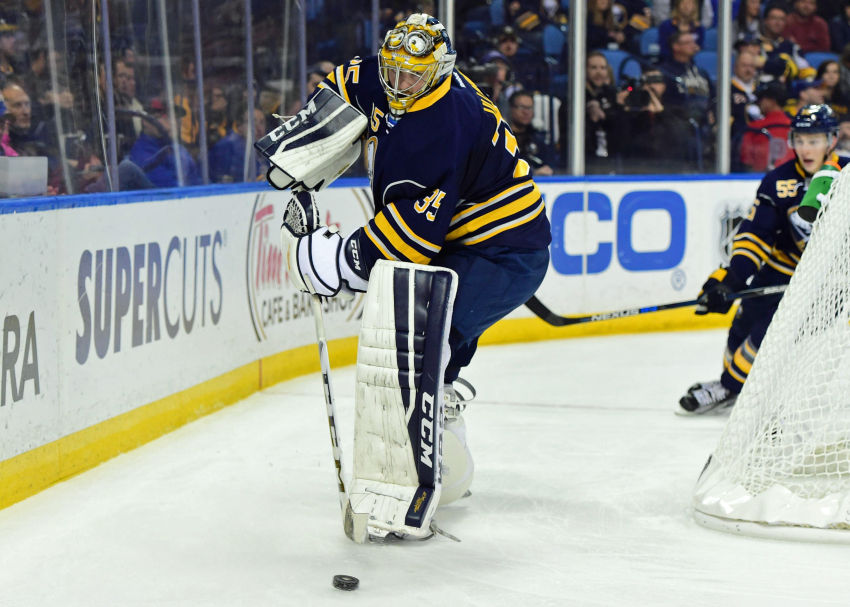The Unspoken Truths of Hockey`s Tie-Breakers and Controversial Calls
The world of professional hockey, with its blend of raw speed, precision, and strategic depth, is a constant theater of athletic prowess. Yet, even in this highly refined environment, certain aspects of its foundational rulebook frequently spark debate. Enter Linus Ullmark, the Ottawa Senators` esteemed goaltender and a Vezina Trophy recipient, who recently offered a thoughtful critique and some rather pointed suggestions regarding two of the game`s most persistent discussion points: the structure of overtime and the often-elusive concept of goaltender interference. His insights cut to the core of competitive fairness and player experience, challenging the status quo with the weight of someone who lives and breathes these moments.
The Overtime Conundrum: More 3-on-3, Less Shootout Lottery?
For years, the NHL has grappled with finding the ideal balance for resolving regular-season ties. The current 3-on-3, five-minute overtime period was introduced to reduce the frequency of shootouts, offering a thrilling, wide-open brand of hockey. Indeed, it has largely succeeded, showcasing skill and endurance in equal measure. However, as Ullmark points out, the shootout – a skills competition detached from the preceding 65 minutes of team play – remains a contentious necessity, often perceived as hockey`s equivalent of a penalty kick lottery.
Ullmark, speaking from the unique vantage point of a netminder, articulated a “love-hate” relationship with the shootout. One can hardly blame him. Imagine delivering a career-defining performance, only for the game`s outcome, and your personal statistical record, to hinge on a series of one-on-one duels. “You can go out and play the best game of your life and have a shutout,” Ullmark lamented, “and the other goalie can play phenomenal as well — then you go out there and let in three (shootout goals), and you feel like the worst goalie ever.” Conversely, a shootout victory is an unparalleled “rush,” a solitary triumph.
His proposed solution is elegantly simple: extend the 3-on-3 overtime by an additional five minutes, mirroring the format seen at events like the 4 Nations Face-Off. The logic is compelling. A longer period of open-ice hockey would undoubtedly yield more game-deciding goals, further reducing the reliance on the shootout. It prioritizes “actual play” over individual showmanship, ensuring that a team`s collective effort throughout the game is more likely to be reflected in the final score. While player fatigue might be a minor consideration, the enhanced spectacle and perceived fairness could easily outweigh such concerns, pushing the envelope of modern hockey`s thrilling evolution.
Navigating the “Grey Zone”: The Elusive Nature of Goaltender Interference
If overtime is a matter of refining existing mechanics, goaltender interference is a Gordian knot of interpretation, perpetually tangling officials, coaches, and fans alike. It is, by common consensus, the NHL`s most frustratingly subjective rule. A legitimate goal can be wiped off the board, or a seemingly clear infraction overlooked, all based on a fleeting moment and the precise angle of observation. This “perpetual vagueness” transforms coach`s challenges into high-stakes gambles, with outcomes that often feel less about definitive rules and more about arbitrary judgment, a cosmic struggle between a puck in the net and a skate in the crease.
Ullmark`s response to this persistent issue is both direct and intriguing. He advocates for a “specific goal watcher/referee in Toronto who has the perspective of goaltenders to really put it down in black and white what is goaltender interference and what is not.” This proposition highlights a critical disconnect: the view from between the pipes is fundamentally different from any other on the ice or in the booth. A goalie is not merely an obstacle; they are an active participant, attempting to perform their duties in a high-traffic area.
The “inches and perspective” argument is key. As Ullmark explains, a goaltender attempting to regain their position after being subtly nudged, even outside the crease, can be severely hampered. Current rules might technically absolve an attacking player if contact occurs outside the crease, yet the effect of that contact on the goalie`s ability to make a save is undeniable. Ullmark craves a “very clear-cut” definition, akin to the unambiguous nature of an offside call, moving the rule away from its notorious “grey zone.”
However, the quest for such absolute clarity in a sport as dynamic as hockey has proven notoriously difficult. As Kris King, the NHL`s Vice President of Hockey Operations, once observed, these incidents are “snowflakes”—each unique, laden with nuance, and requiring significant judgment. The chaotic ballet around the net means that “black and white” often dissolves into shades of grey, regardless of who is watching. Yet, Ullmark`s call for a specialist`s eye, one intimately familiar with the goaltender`s plight, offers a compelling avenue for a more consistent and, ultimately, fairer application of the rule.
The Path Forward: A Player`s Voice in the Game`s Evolution
Linus Ullmark isn`t just a player; he`s an advocate for the sport`s continuous improvement. His suggestions, born from firsthand experience at the highest level, resonate with a broader sentiment among fans and pundits who yearn for less ambiguity and more decisive, transparent outcomes. As the Ottawa Senators prepare to launch their 2025-26 season, Ullmark`s opinions serve as a timely reminder that even the most established sports can benefit from critical examination and a willingness to adapt. The ongoing dialogue between players, officials, and the league is crucial to ensuring that hockey remains not just an exhilarating spectacle, but a game whose integrity is as unblemished as its perfectly Zamboni-ed ice.

